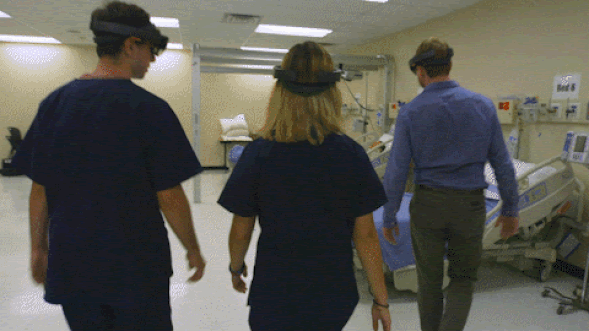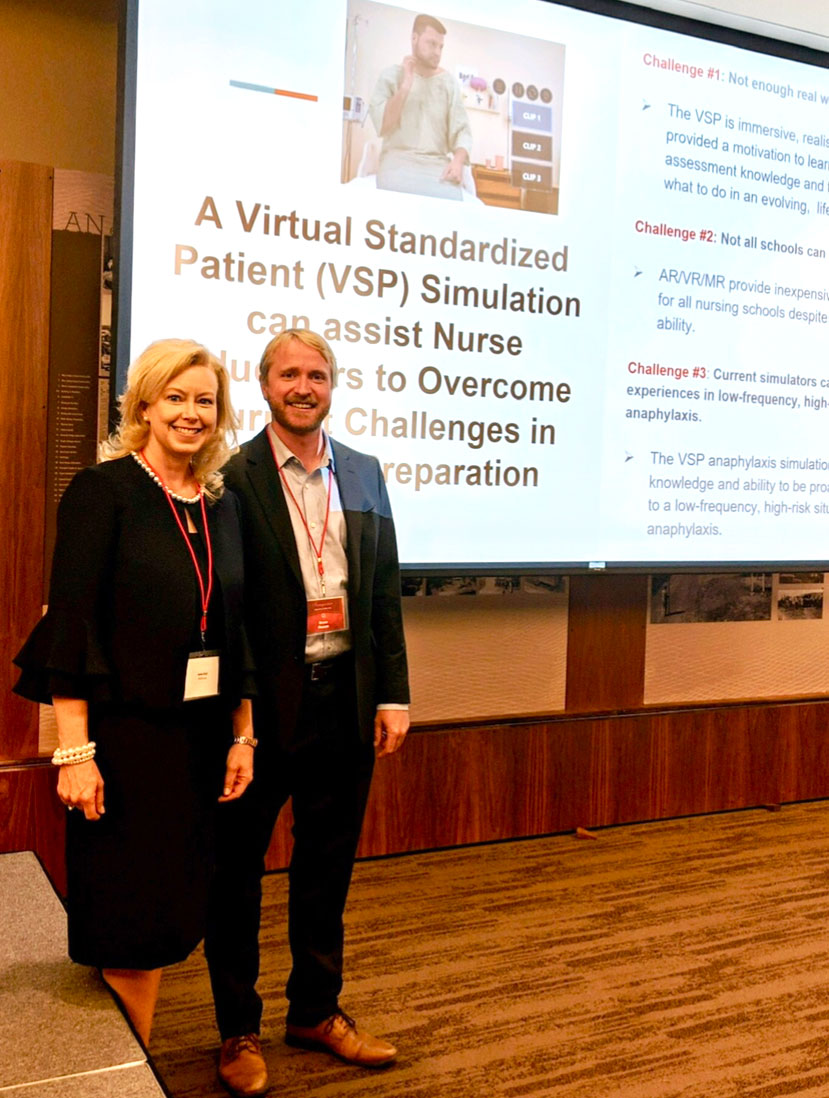Nursing Simulator Research Draws Top Prize
A best paper award went to an SDSU team confirming the value of a virtual patient tool that could raise standards for education in rural and developing countries.

An exploration of a virtual simulation tool that may revolutionize nursing education, authored by two San Diego State University leaders and alumni, has earned a Best Graduate Student Paper award from the nation’s top professional organization for educational researchers.
Helina Hoyt, nursing program coordinator at SDSU Imperial Valley, and Sean Hauze, associate director for Instructional Technology Services (ITS), were honored by the American Educational Research Association (AERA) for the paper “Equitable Nursing Education Simulation through Holographic Video: Measuring Student Knowledge, Skill, and Motivation to Learn.” The project stemmed from their collaborative research as students in SDSU’s Joint Ph.D. Program in Education with Claremont Graduate University (CGU).
“When we saw that we were selected, I think we were kind of in shock,” Hoyt said. “The fact that our manuscript was rated highest by the committee reviewers is a testament to the collaborative and innovative work happening at SDSU.”
Research and Implications
Their research analyzed the efficacy of a new virtual standardized patient simulation designed by SDSU through a collaborationwith Texas Tech University, Microsoft and the education services company Pearson. The augmented reality tool proved effective in presenting nursing students with complex patient scenarios previously only available at universities with access to medical actors or multimillion-dollar simulation labs.
More than 160 nursing students at SDSU’s main campus and SDSU Imperial Valley took part in the study, using the technology to assess a holographic-simulated patient exhibiting symptoms of anaphylactic shock. The research showed the virtual standardized patient—delivered through a $3,000 headset—provided a quality and immersive experience that could be a game-changer for nursing education in rural communities and the developing world.
“These findings are relevant beyond Imperial Valley and San Diego, with potential to inform practices for increasing educational equity in Sub-Saharan Africa and other rural regions around the world that don't have access to a high-fidelity simulation lab,” Hauze said. “At a fraction of the cost of traditional nursing simulation, this research indicates nursing students can use augmented reality to learn how to identify and how to mitigate these low-frequency, high-risk scenarios.”
Shooting for the Moon
Hauze and Hoyt initially crossed paths in 2016 when Hauze was presenting about the technology in a School of Nursing faculty meeting. The two soon found themselves in a doctoral program curriculum class together where they decided to team up, creating a truly complementary interdisciplinary partnership between SDSU School of Nursing and ITS.
“Given the multi-dimensionality of this research, it would not have been possible through just ITS or the School of Nursing alone,” Hoyt said. “Additionally, the SDSU and CGU dissertation process provided access to some amazing mentors who had very unique expertise and provided methodologically sound approaches.”
During the program, they were guided by their dissertation committee members, including educational technology expert Jim Marshall, curriculum design expert Douglas Fisher, both professors in the Department of Educational Leadership, as well as CGU School of Educational Studies dean DeLacy Ganley and professor Deborah Carter.
Hoyt and Hauze also credited the mentorship of James Frazee, SDSU’s chief academic technology officer and Associate Vice President for Instructional Technology, as well as School of Nursing director Philip Greiner and associate director Michael Gates, who convinced them to publish and submit to AERA.
“(Frazee) said start high, and if you're not accepted to AERA you can go elsewhere,” Hauze recalled. “But you might as well shoot for the moon on this.”



Nursing Simulator Research Draws Top Prize SDSU's Helina Hoyt and Sean Hauze earned a Best Graduate Student Paper award from the nation’s top professional organization for educational researchers.



